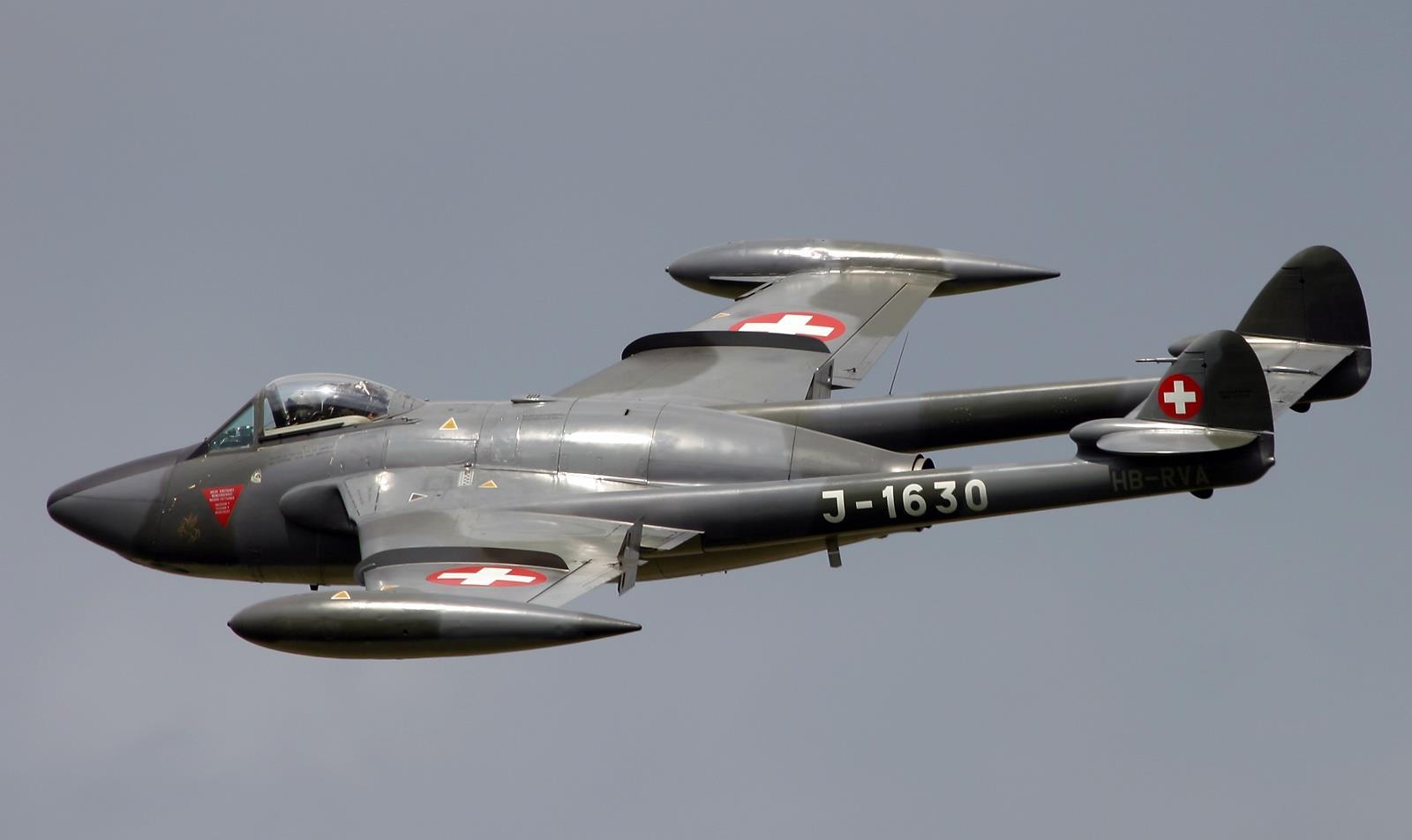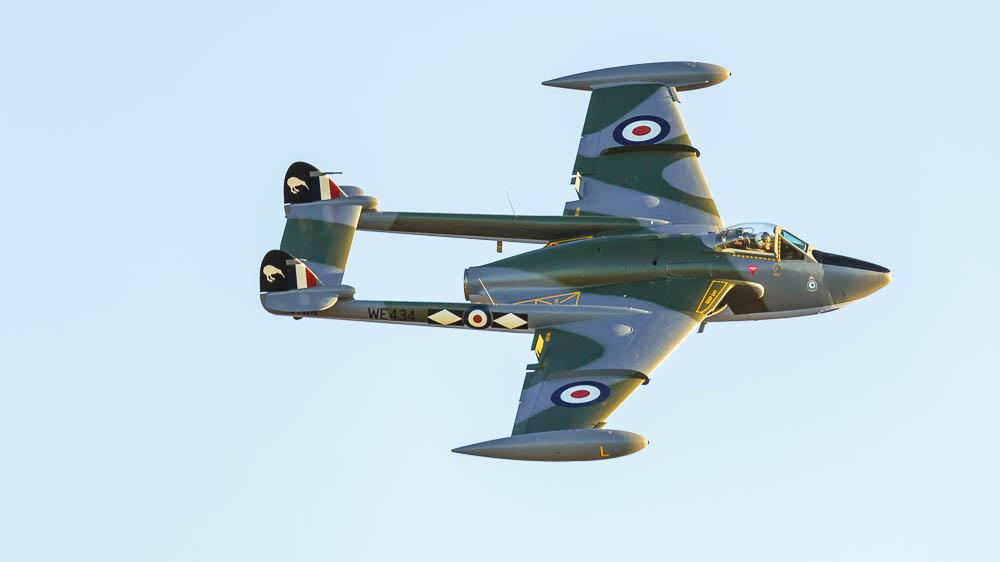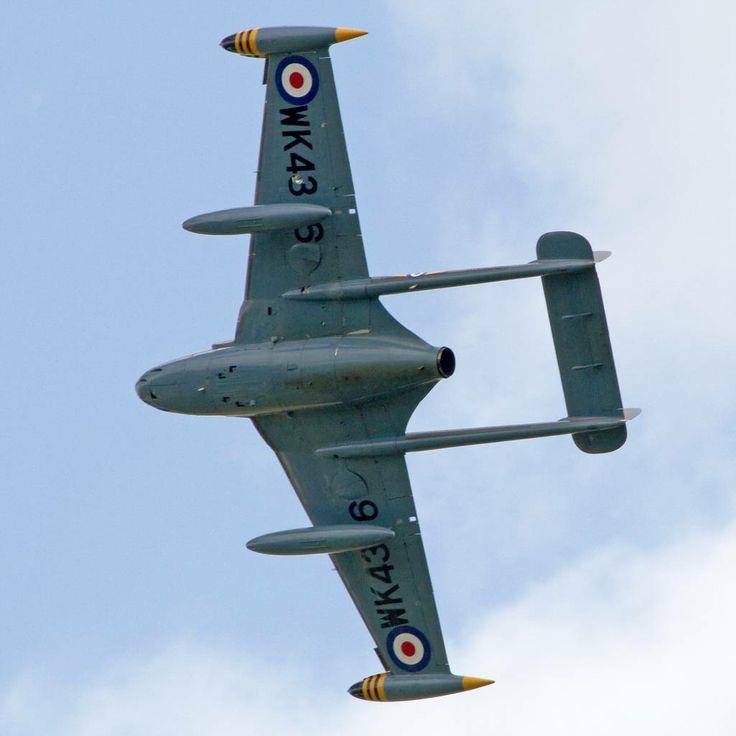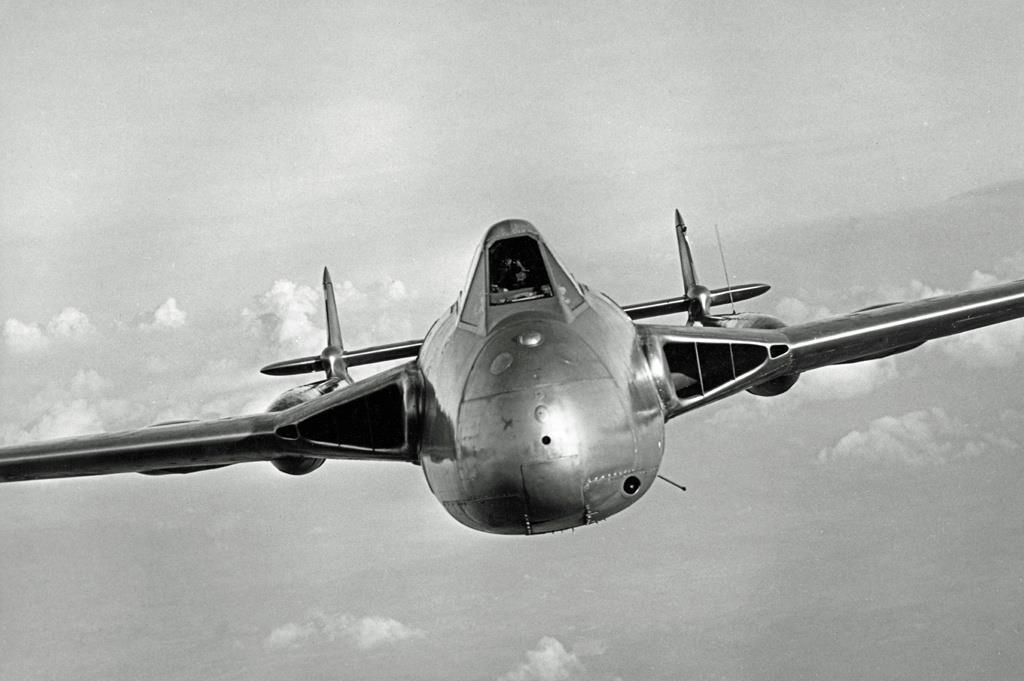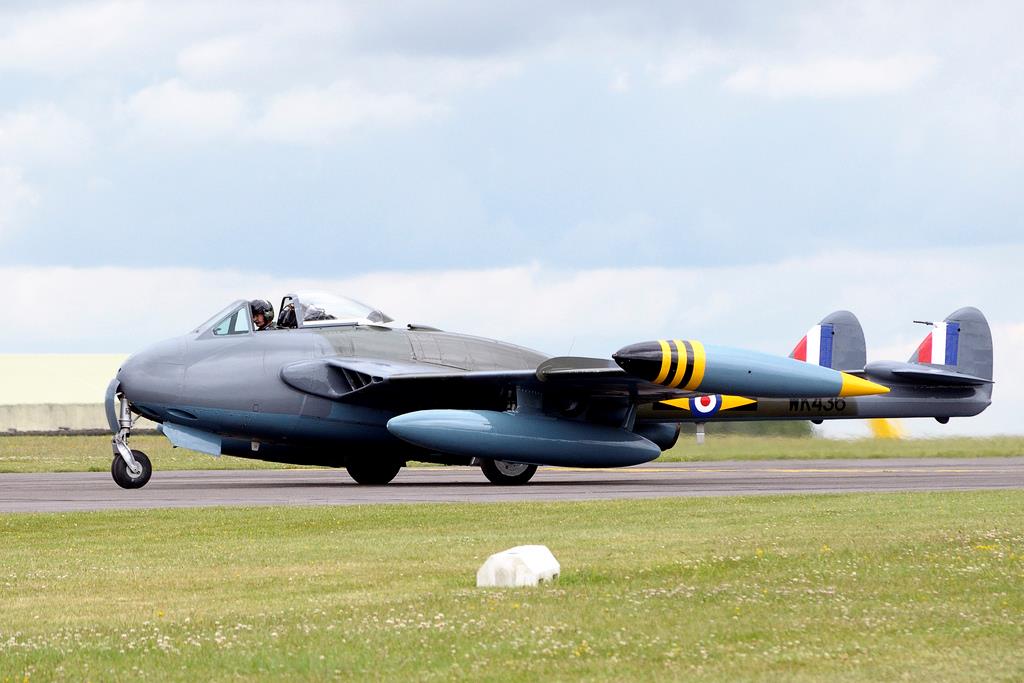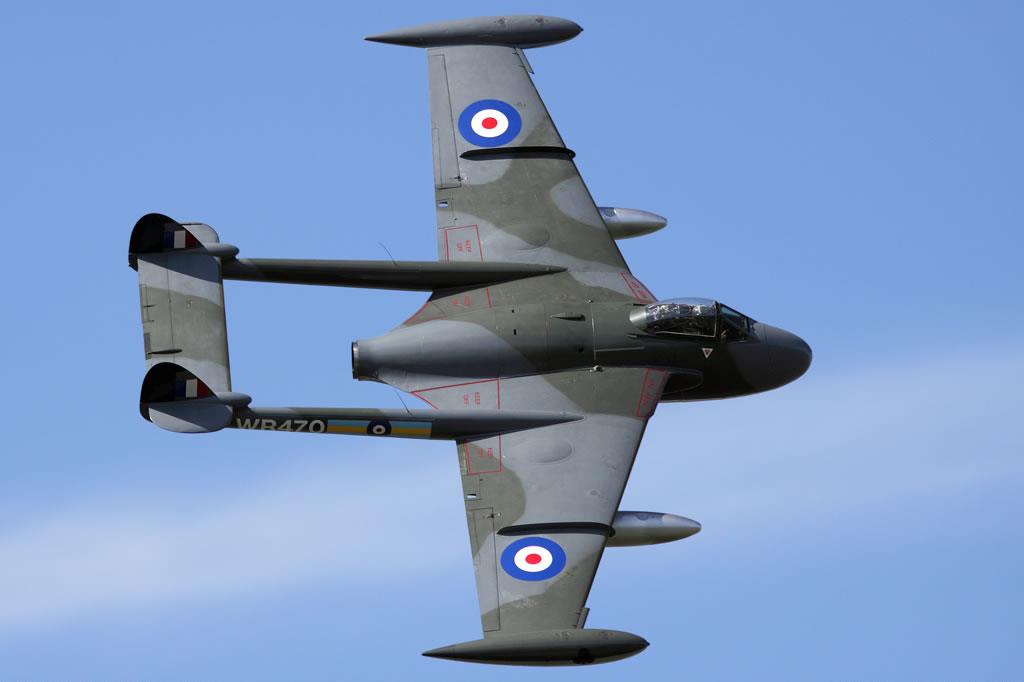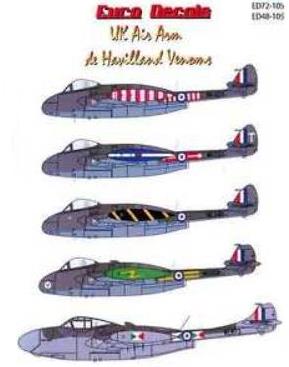S'sonic
Stealth
Menu
A free template by Lucknowwebs.com for WYSIWYG WebBuilder 8
Powered by Sispro1-S
Nigel G Wilcox
Paragon Of Space Publication
© Copyright Reserved - United Kingdom
Ideal Screen Composition 1024 x 768
SITEMAP
PSEUDO SCIENCE
SCIENCE RESEARCH
ABOUT
Desk
Supersonic
Stealth
Study
Menu
MAIN INDEX
Fastest Air Planes
Space
Transport
Menu
de Havilland Venom
Maximum speed: 925.40 km/h (575.02 mph), Maiden flight: 19 Apr 1951, Length: 36.58 ft, Wingspan: 42.85 ft, Manufacturers: De Havilland · SNCASE, Engine type: de Havilland Ghost.
Role: Fighter-bomber
National origin: United Kingdom
Manufacturer: de Havilland Aircraft Company
First flight: 2 September 1949
Introduction: 1952
Status: Retired
Primary users: Royal Air Force
Royal Swedish Air Force
Swiss Air Force
Venezuelan Air Force
Number built: 1,431 (including Sea Venom/Aquilon)
Developed from: de Havilland Vampire
Variants: de Havilland Sea Venom/Aquilon
General characteristics
Crew: 1
Length: 31 ft 10 in (9.70 m)
Wingspan: 41 ft 8 in (12.70 m)
Height: 6 ft 2 in (1.88 m)
Wing area: 279 ft² (25.9 m²)
Empty weight: 9,202 lb (4,173 kg)
Loaded weight: 15,400 lb (7,000 kg)
Powerplant: 1 × de Havilland Ghost 103 turbojet, 4,850 lbf (21.6 kN)
Performance
Maximum speed: 640 mph (556 kn, 1,030 km/h)
Range: 1,080 mi (934 nmi, 1,730 km)
Service ceiling: 39,400 ft (12,000 m)
Rate of climb: 9,000 ft/min (45.7 m/s)
Wing loading: 56.17 lb/ft² (274.2 kg/m²)
Thrust/weight: 0.41
Armament
Guns: 4× 20 mm (.79 in) Hispano Mk.V cannon, with 600 rounds total (150 rpg).
Rockets: 8× RP-3 "60 lb" (27 kg) rockets, or;
Bombs: 2× 1000 lb MC bombs

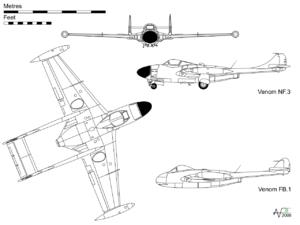
The De Havilland Venom was a post-war single-engine jet fighter.
It was a development of the DH Vampire fighter but with a thinner wing section and wing leading edge sweep. It was also designed around the more powerful DH Ghost engine, rather than the DH Goblin of the DH Vampire and can readily be distinguished by the additional wingtip-mounted fuel tanks.
Two prototypes were built, these being modified DH Vampire FB.5 aircraft. The first prototype (VV612) was first flown on 2nd September 1949 by De Havilland Test Pilot John Derry whereafter it was delivered to Boscombe Down for official trials and evaluation. During the trials the aircraft out performed many of the contemporary fighters involved in the mock battles.
The second prototype (VV613) flew on 23rd July 1950 before joining the test program in April 1951.
After the prototypes, production aircraft were fitted with a lengthened tailplane which extended beyond the twin tailbooms.
The initial service variant was the DH Venom FB.1 of which 375 were built, entering service in RAF Germany in mid-1952.
De Havilland also built a two-seat night-fighter version of the DH Venom, mating the fuselage of the Vampire NF.10 to Venom wings and in a side-by-side cockpit configuration. The first prototype (G-5-3) was built as a private venture and flew for the first time on 22nd August 1950.
Ninety production aircraft were ordered for the RAF as the DH Venom NF.2, the first of these flying on 4th March 1953. The NF.2 was powered by the 4,950lbst Ghost 104 turbojet. Some aircraft were fitted with the frameless canopy and larger fins of the Vampire T.11, being then designated Venom NF.2A.
The later DH Venom NF.3 (129 built), featured an improved Westinghouse AN/APS-57 radar and other features of the DH Venom FB.4.
A two seat night fighter variant was also exported to Sweden as the DH Venom NF.51 with 62 being delivered and designated as the Type J33 in Swedish service.
After proving to themselves that carrier operations were feasible for jet aircraft with the de Havilland Sea Vampire, the Navy formulated a specification for a fleet defence fighter. The RAF issued a similar requirement and de Havilland decided the requirements were so similar that a single aircraft could fulfil them both. While Gloster aircraft produced the GA.5 (later to become the Javelin), de Havilland produced the DH.110. The RAF were edging towards the Gloster aircraft but as an insurance, five DH.110s were contracted for, plus four for the Royal Navy. These four were quickly cancelled when the Navy decided that a simpler and cheaper option would be an improved version of the de Havilland Sea Venom (the standard Sea Venom was shortly to enter service).
The five aircraft for the RAF were also reduced; down to two prototypes - the RAF was also looking at simpler and cheaper options.
